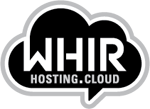This article originally appeared at The WHIR
Among the announcements at Cloud Foundry Summit Europe in Berlin this week, Microsoft announced the general availability of Cloud Foundry on Azure, and that Cloud Foundry now supports Docker and .NET natively.
Cloud Foundry is a Platform-as-a-Service (PaaS) software technology, which is a popular category for larger organizations. Penetration of PaaS among midmarket and enterprise organizations has reached 35 percent, and a further 20 percent are in the process of evaluating PaaS, according to a poll by the Enterprise Strategy Group (subscription required).
According to Microsoft Azure senior program manager Ning Kuang, “Cloud Foundry makes it faster and easier to build, test, deploy, and scale cloud applications from different languages. With today’s announcement, developers can enjoy a consistent Cloud Foundry experience in Azure, and a simplified provisioning workflow by leveraging Azure Resource Manager templates.”
In June, Microsoft had released Cloud Foundry on Azure Preview, then its second preview version in September 2015 allowing customers to deploy a standard Cloud Foundry infrastructure on Azure using Bosh-Init, and also use the latest Azure resource management framework to support multiple Cloud Foundry VMs.
Projects Pave Way for Docker Images, .NET Apps
Three initiatives the Cloud Foundry Foundation had been incubating have been promoted to active projects: Diego, Garden, and Greenhouse.
Next-generation runtime project Diego provides a more flexible architecture at the runtime layer, allowing Cloud Foundry to natively support Docker container images and .NET applications. The Garden project addresses Cloud Foundry’s container orchestration layer and uses the Open Container Initiative‘s runC implementation. The Greenhouse project enables support for .NET within the platform.
Supports for .NET means organizations now have the flexibility to work with a mix of both Linux and Windows applications on Cloud Foundry. And Docker support allows developers to choose between pushing code or pushing container images into the platform, and providing consistency in how applications are managed and scaled.
Cloud Foundry also announced this week that the Cloud Foundry Foundation now has more than 50 members, reaching this milestone with the addition of CA Technologies, Cisco, Citi, Hitachi Ltd., RBC and SUSE.
Hewlett Packard Enterprises, which bought Cloud Foundry-based Platform-as-a-Service startup Stacato months ago, launched its Helion Stackato PaaS on Cloud Foundry v2 as an IaaS agnostic solution.
Also this week, Cloud Foundry revealed a new logo. It features a molten liquid pouring out of the letter “O” into a gear that also forms the shape of a lightbulb. A Cloud Foundry blog post explains that the new logo represents open source’s “free flow of ideas,” combined with continuous innovation, creation and craftsmanship, as well as thought and innovation.
This first ran at http://www.thewhir.com/web-hosting-news/cloud-foundry-adds-native-docker-and-net-support-microsoft-launches-cloud-foundry-on-azure






